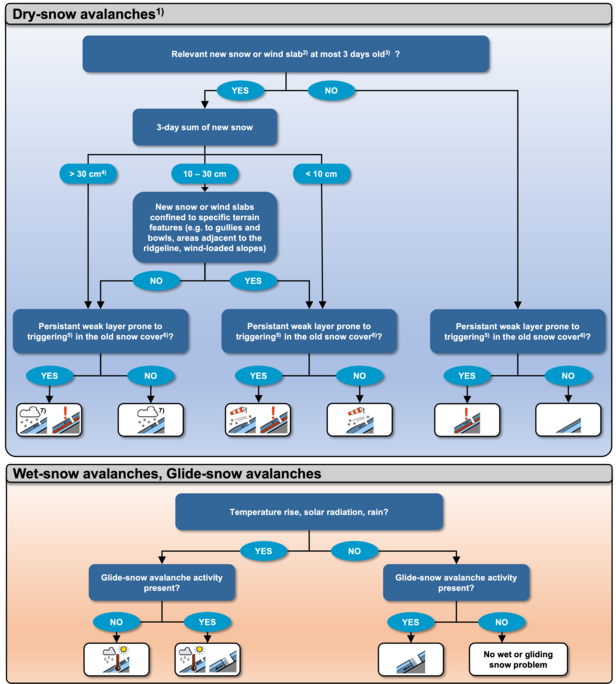The currently predominant avalanche problems are determined using the decision-making tool illustrated below.

1) If in (generally) favorable situations it remains unclear which problem causes the main hazards, "dry-snow avalanches" is used.
2) Relevant layer of new snow or wind slab: The hazard caused by new snow or wind slab has to be equal or higher than the hazard from persistent weak layers.
3) The problem wind slab can prevail for more than 3 days if the wind slabs can still be released and are recognizable as such.
4) If the wind blows in gale-force (average speed > 100 km/h) during the snowfall, use the avalanche problems new snow and wind slab.
5) Criteria, if a weak layer is prone to triggering: The weak layer is at the failure layer of avalanches or identified in snow profiles/stability tests and within the first meter from the snow surface.
6) Weak layer is not at the interface between new snow or wind slab and old snow, so that in case of an avalanche, parts of the old snow release as well. (Otherwise, new snow or wind slab is used, and the unfavorable old snow surface is described in the text).
7) If after the snowfall wind slabs were formed that contribute to the overall danger: both, new snow and wind slab are used.